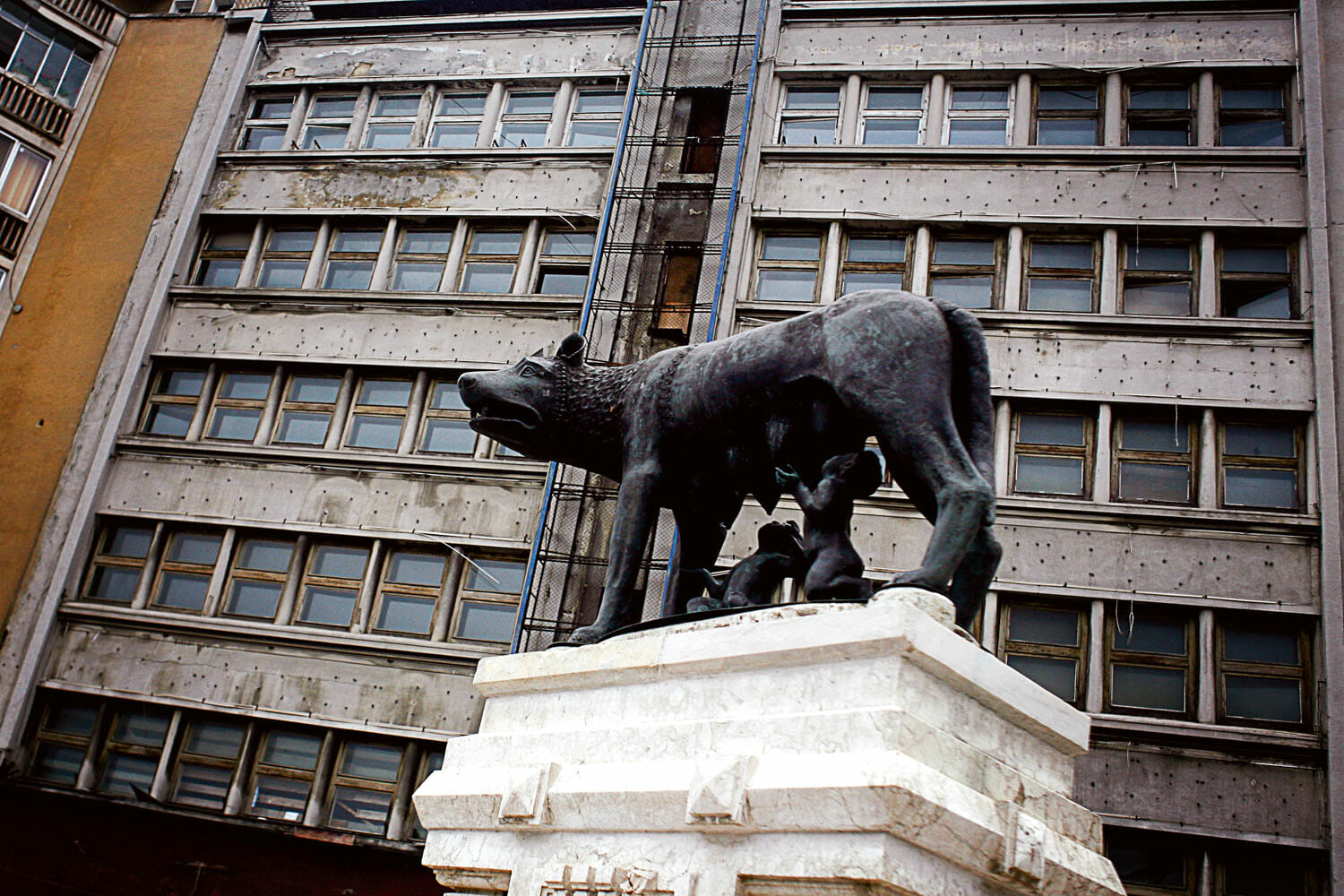
She-wolf
Romania displays the largest number of she-wolf statues in the world, with at least 24 replicas of the Capitoline She-wolf.
Last year, the mayor of Bucharest decided to move the landmark She-wolf statue from Romană Square to the Old Center of the city, claiming that the tiny piazzetta would be a better fit. It was the fifth time the statue was moved since Italy sent it over as a gift in 1906. In its 100 years, the She-wolf has gone through a lot: during communism it was moved from Patriarchy Hill because it was believed the statue drew people to the church; later, it was moved from its secluded spot in a park because people kept stealing the bronze babies; more recently, during the statue’s 13 years in Romană Square, several drivers crashed into its pedestal.
The Capitoline Wolf celebrates the myth of the founding of Rome – it is believed Romulus and Remus, the founders of the city, were abandonded as babies and a she-wolf saved and fed them. Italy began sending copies of the statue 100 years ago not only to Romania, but also to other countries sharing Latin origins, or to states close to Fascist Italy. Besides the one in Bucharest, Romania received five copies of the She-wolf between the two wars. Today, there are at least 24 copies in cities accross the country. The Culture Ministry couldn’t confirm the number because, they say, they never tried to count them.
Their ubiquity in Romania has more to do with a nationalistic urge. In Transylvania especially, it’s meant to show ethnic Hungarians who was here first. Of course, many of these statues have also moved around.
The She-wolf in Cluj was transferred to Sibiu during the WW2, when Northern Transylvania was under Hungarian occupation. After she was brought back to Cluj, the She-wolf travelled from the University to the Town Hall and then Heroes Avenue, where it stands today. The Târgu Mureş statue was also moved to another town during the war and it’s uncertain whether the city got the original back, or merely a copy.
In fact, that’s how several towns and villages got statues – the mayor demanded that a copy be made. The most prolific builder is a dentist from Bistriţa Năsăud, Traian Dascălu, who paid a local artist to make five she-wolves. They are not made of bronze, but marble, since bronze would have been too expensive (15,000 euros a piece), said Dascălu. “I wanted to draw attention to our Roman origin, in order to defend the cultural and historical values,” he explained, stressing that he believes Romanian heritage is under threat in Transylvania.
Historians say that in the past there might have been reasons to draw attention to our Roman origins, but today, that’s not the case. We build the statues nonetheless. And if a town already has one, they can give them away. Alba Iulia, for example, received its She-wolf statue from the Italian town Alessandria in 1933. Last year, the mayor of Alba Iulia sent a replica of the statue back to Alessandria as a gift.
Acest articol apare și în:
S-ar putea să-ți mai placă:
The Ordinary Pufuleți
Under communism, in the absence of capitalist candy, people loved them. Then, chips and chocolate took over. Now, the nostalgic snack is back.
Justiție oarbă pentru copiii romi traficați din România
Anchetatorii români au crezut că au un caz clar împotriva presupușilor lideri ai uneia dintre cele mai mari rețele de trafic de persoane din Europa. După aproape un deceniu, de ce nu a fost nimeni condamnat?
Romanian Style Review
There is hope for Romanian fashion. Eleven professionals explain why.



